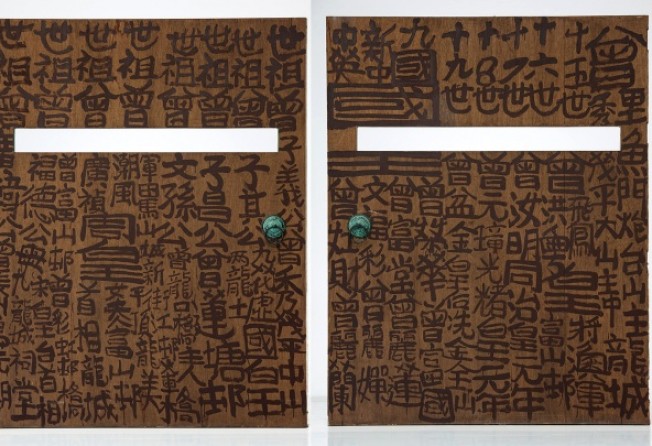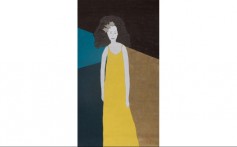
M+ chief Lars Nittve vows museum won't steer clear of politics
One lawmaker warned that Hong Kong's ambitious M+ museum shouldn't mix art with politics, but executive director Lars Nittve has other ideas

The West Kowloon Cultural District has taken centre stage again this week, courtesy of a display of giant inflatables.

The acquisition policy for M+, the museum of contemporary visual culture that will be first out of the gate as the arts hub takes shape, may sound dry. But this blueprint will shape what visitors to the museum experience when it opens its doors in 2017; it specifies how the museum will assess what donations to accept and what artwork to purchase.
The content of the collection, and other artworks being acquired for the culture hub's galleries, museums and public spaces, is under the spotlight after lawmaker Chan Kam-lam, of the Beijing-loyalist Democratic Alliance for the Betterment and Progress of Hong Kong, warned the museum not to mix art and politics.
In an interview with the Post, the museum's executive director, Lars Nittve, made clear that he would not steer away from politics.
He said the museum would also be more than just another museum of contemporary art like London's Tate Modern, of which Nittve was the founding director. Instead, the acquisitions policy will set it on the path to offering a "Hong Kong perspective with a global vision" - the orginal vision stipulated in 2006.
"It doesn't mean everything we show will have to be linked to Hong Kong. It's about looking at the world at different angles," Nittve says of the 18-page mission statement, which may be one of the most detailed acquisition policies in the world
M+ sparked controversy with its first acquisition - 1,463 works of contemporary Chinese art donated by the Swiss collector Uli Sigg, as well as 47 purchased from Sigg for HK$177 million.
The Sigg collection covers artworks from the 1970s to the 2000s, including works of an explicitly political nature by dissident artist Ai Weiwei . There had been questions over the value of the collection, given that the full list was not released until recently, and questions about why mainland Chinese art, rather than local work, had been the first acquisition. Then there's was Chan's intervention and the question of politics.
But Nittve believes the museum can put its collection into a Hong Kong perspective - even for works that are from outside of Hong Kong - while also upholding artistic freedom and curatorial independence.
"For example, what happened after the Cultural Revolution is extremely important. It affects us [Hong Kong], and it's affected by what happened here," Nittve says, citing the fact that many mainland artists after the upheaval under Mao Zedong were able to establish their view of China by illicitly watching films made by Hong Kong's Shaw Brothers.
"If looked at from a London perspective, something that happened in Beijing in 1983 is quite [peripheral], but it is more important to us," Nittve says. "It has consequences and meaning. The negotiation between the UK and China [on the handover of Hong Kong] also started to happen. It's that whole environment that creates a Hong Kong perspective."
The acquisition policy reflects a change in emphasis since the idea for what would become M+ was set out in a report on facilities at the culture hub submitted by the Museum Advisory Group to the Consultative Committee on the Core Arts and Cultural Facilities of West Kowloon Cultural District in 2006.
Nittve says that when he took over two years ago, he and his team thought things over from scratch. While the acquisition policy states that visual culture from Hong Kong will remain at the core of the M+ collection, the initial four core categories proposed in the 2006 report - visual art (including ink art), design, the moving image and popular culture - are no longer the same.


Nittve says that eliminating popular culture as an individual category is more appropriate for the situation in Asia, particularly Hong Kong. Nittve, a former art critic and art history lecturer, points out that popular culture is often represented as the flip side of fine art in the West, but this kind of differentiation is irrelevant here, as many creative works were conceived for commercial platforms. Popular culture is therefore represented in each of the three major categories.
"All these categories - in practice ... there's a much higher fluidity in Hong Kong. It's not so clearly defined here," Nittve says. Design, for example, can also cross over with other categories of visual culture. He adds that whether a work is popular or fine art depends on where it is presented and how it is used.
The acquisition policy also states that "M+ will deploy [a] more recent and more global concept of art". And by global, it means primarily Western, as visual cultural movements deal with a Western understanding of the boundary between visual art and visual culture. The idea of equating Western to global has drawn criticism from parts of the local culture sector, with the museum accused of failing to offer top jobs to home-grown talent.
Key senior curators Tobias Berger, Pi Li and Aric Chen are viewed by some as outsiders, despite their experience with Hong Kong and the region.
In response to these criticisms, Nittve asks another political question relevant to Hong Kong: "Is universal suffrage a Western idea or a global idea?"
Nittve says that although contemporary art or visual culture is a Western idea, it has spread across the world and has been internalised in other cultures. He takes global to mean something that most people would understand in the world.
The museum has so far spent some HK$225 million of the HK$1.7 billion budget for building its collection - of which HK$1 billion will be spent on building an initial opening collection.
Between purchases and donations, it now has 2,500 works of art. In addition to Sigg's collection, the museum has acquired other mainland and international art work, as well as 700 works from Hong Kong artists.
Besides the most talked-about works by Ai, such as Tiananmen (a photograph of a middle finger raised in Tiananmen Square), there is a 45-minute film documenting the debates and protests that led to the shutting down of the Stars Group exhibition, China's first avant-garde art exhibition after the Cultural Revolution, in 1979.
There is also a three-channel video installation featuring triplet sisters, called Factum Tang (2009), by South African artist Candice Breitz - the museum's first work by a non-Asian artist.
The museum has accepted 280 local, regional and international works donated by 13 Hong Kong collectors and artists. The Post reported this week that Alan Lau donated the performance art piece Guards Kissing by German artist Tino Seghal while local designer and artist Stanley Wong donated 36 photography works.
Donated works date from 1954 to 2011 and also include painting, tapestry, installation and sculpture. Works by local artists such as Gaylord Chan, Lui Chun-kwong, Liu Heung-shing, Chu Hing-wah, Michael Wolf and Stanley Wong are included.
"The impression is that the arts community is not on our side, but this shows that's not true," Nittve says. So far M+ has received donations worth an estimated HK$1.6 billion - including the Sigg collection, valued at HK$1.3 billion by Sotheby's.
However, the HK$50 million announced in the budget for the Leisure and Cultural Services Department to acquire Hong Kong art will have an impact on M+, Nittve says, and clarification of the roles of M+ and government museums will be required.
The next step will see a change in the way the museum is managed. At present, its operations are run by the museums committee under the West Kowloon Cultural District Authority's board, and has an interim acquisitions committee. In future, a separate M+ board will be set up with its own acquisitions committee.
While the museum's executive director and curators will have to declare the contents of their personal art collections to avoid any conflict of interest, there will be no such policy for board and acquisitions committee members, many of whom will be collectors in their own right.
Nittve says that it is common around the world to have major collectors and donors sitting on museum boards and committees. He says that striking a balance will be important, but that a code of ethics applicable to the board and committee might be written to the policy in future.
"No one has a sinister agenda. We are here because we have a passion for art, design, moving image and so forth, to create opportunities, to access to these things," Nittve says.